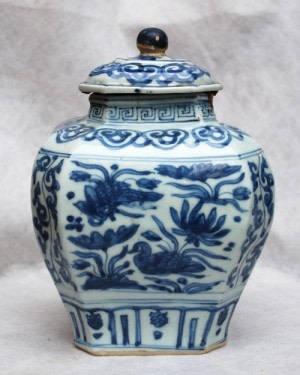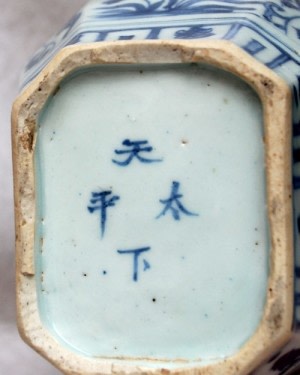BD28
Of hexagonal section rising from the straight foot to a wide rounded shoulder and a short neck, decorated around the body with alternately mandarin ducks-in-lotus-pond motif a further mandarin duck in flight above, or white cranes in flight amongst lotus, the shoulder with a band of ruyi-heads, the neck painted with a key-pattern, the foot encircled by lappets, the glazed base inscribed with a four character commendation mark in underglaze blue reading Tian xia tai pin, or peace and tranquility under heaven, together with a domed, hexagonal cover with further ruyi-heads and a knob finial
Provenance
The collection of MD Otto Lundquist (1886-1950) and his brother the Envoy Constans Lundquist (1891-1950).
Literature
A very similar jar without cover and with a four-character mark reading Wan fu you tong, or May ten thousand blessings gather together, is in the British Museum, ref 1931,0713.1 and illustrated in Jessica Harrison-Hall in Catalogue of late Yuan and Ming Ceramics in the British Museum, 2001, pl. 9:44. A hexagonal jar and cover of identical shape and with the same blue-and-white decoration, and with an apocryphal Xuande reign mark in a double square on the base, was excavated at Taizhou, Jiangsu, from the tomb of Liu Xiang (1495 1541) and of his wife Mme Qiu (1496 1558). The jar was one of only two ceramics included in the burial which otherwise is renowned for its textiles, including male and female clothing.




